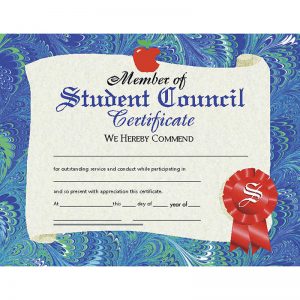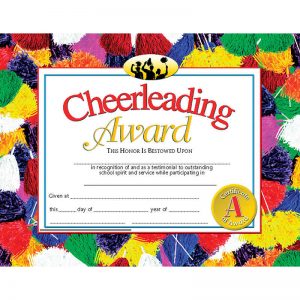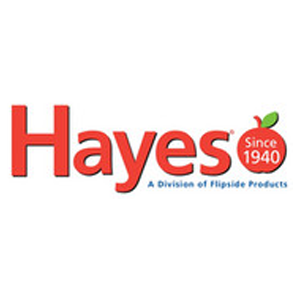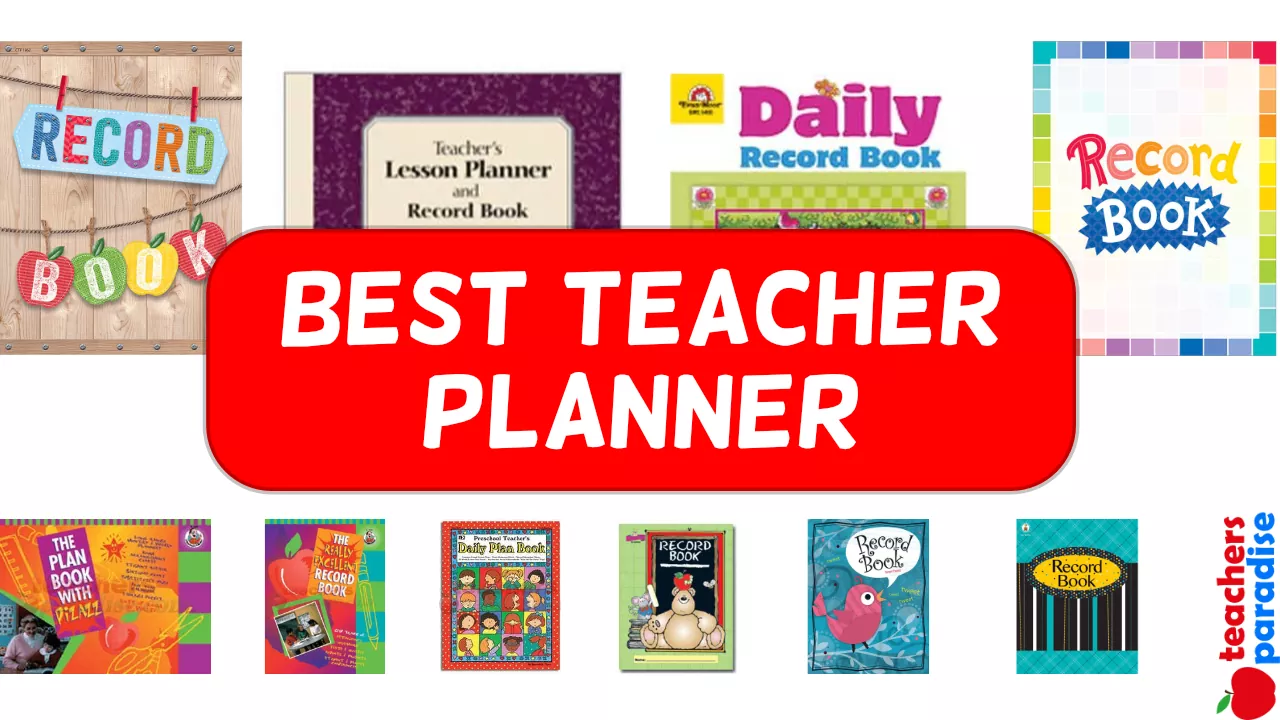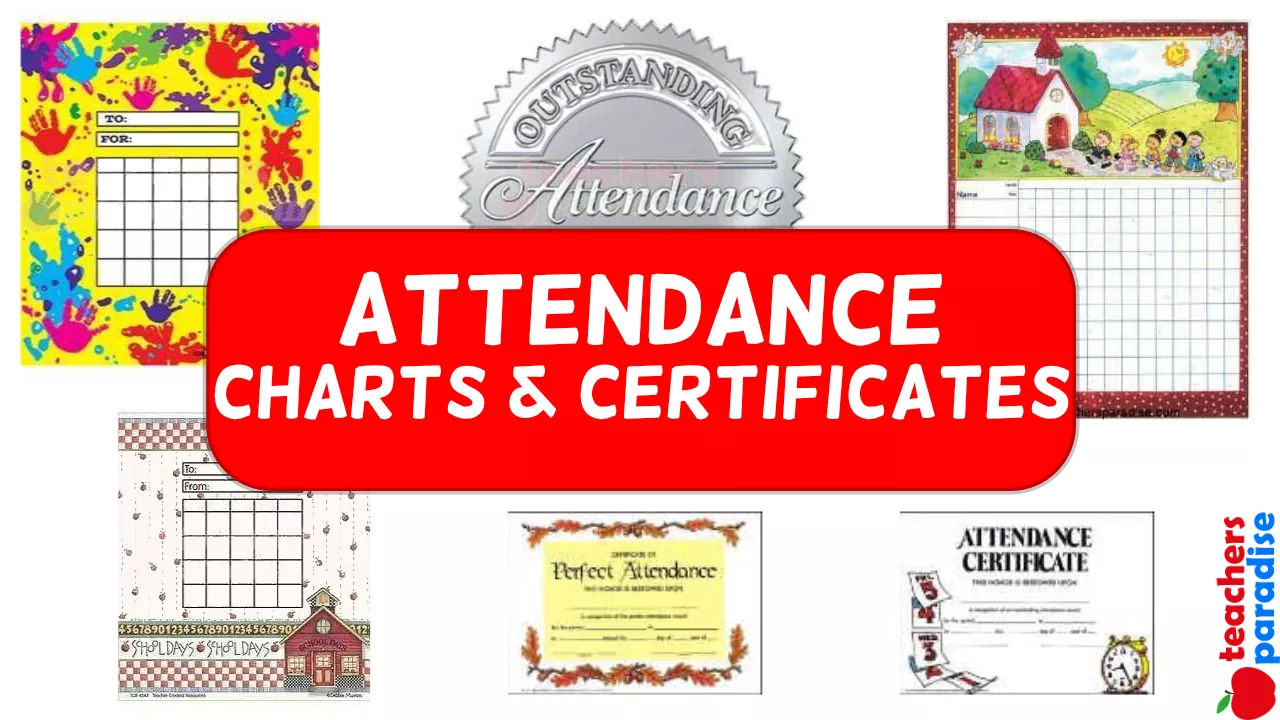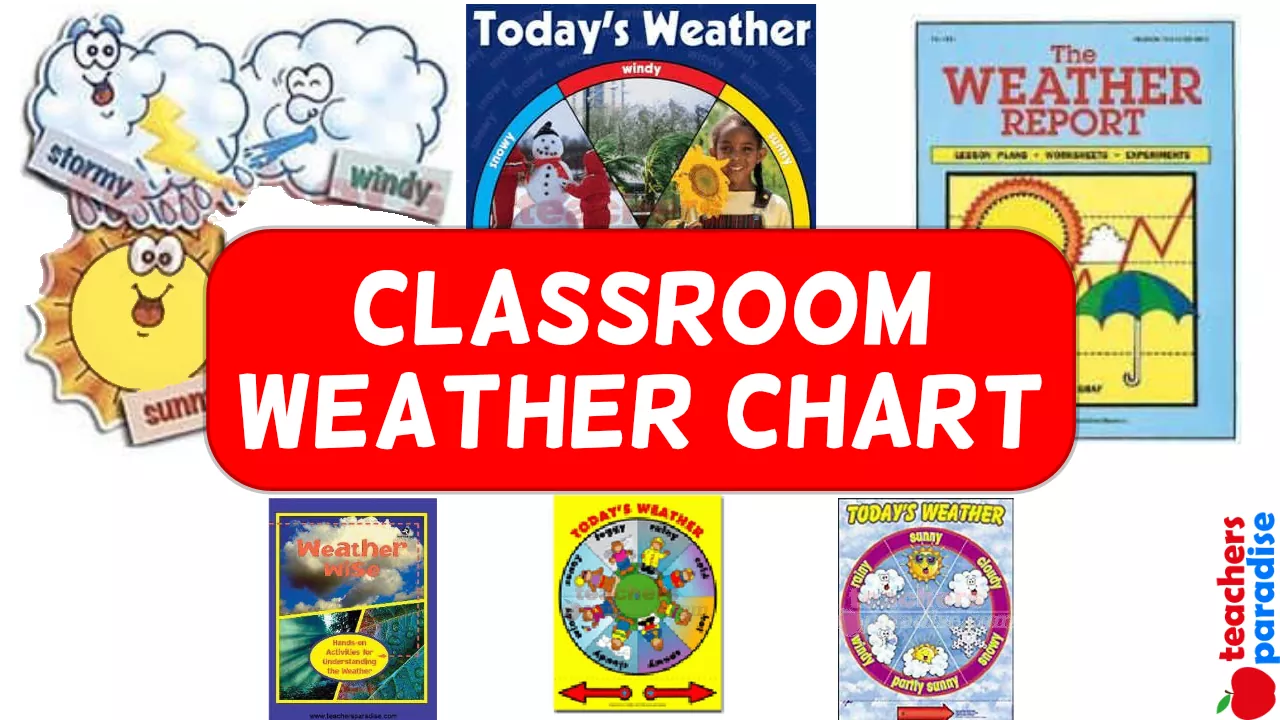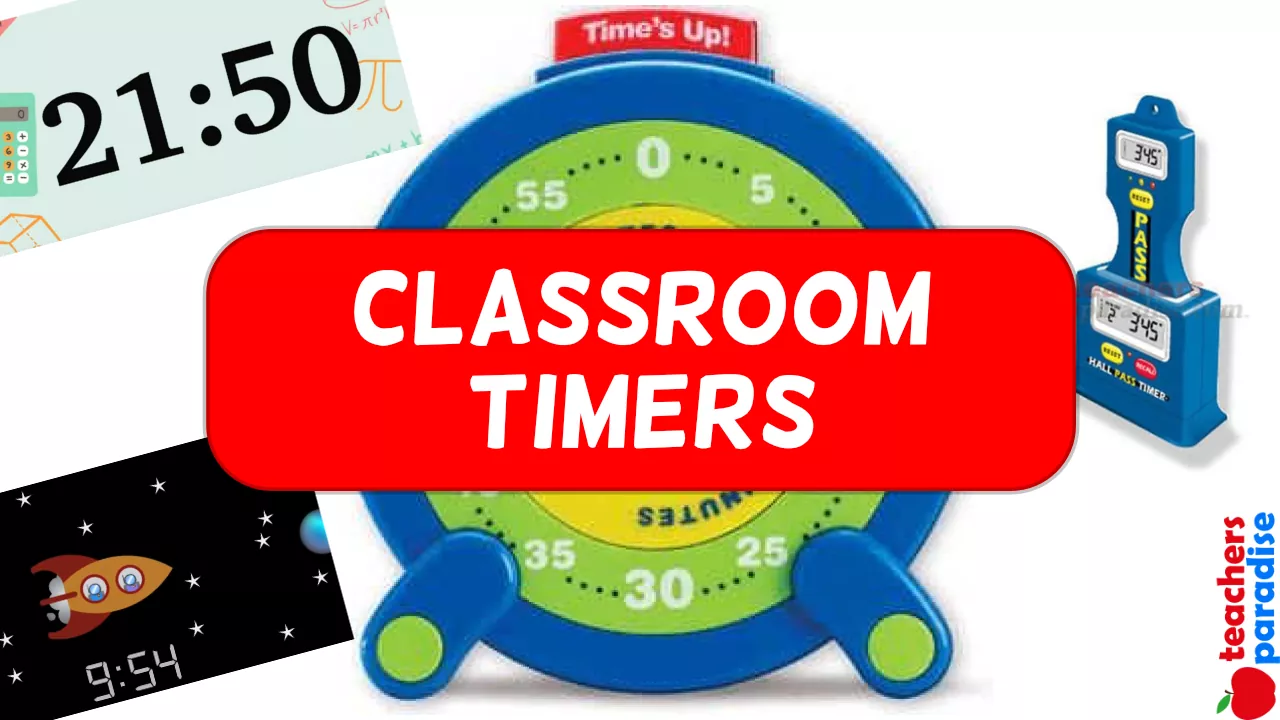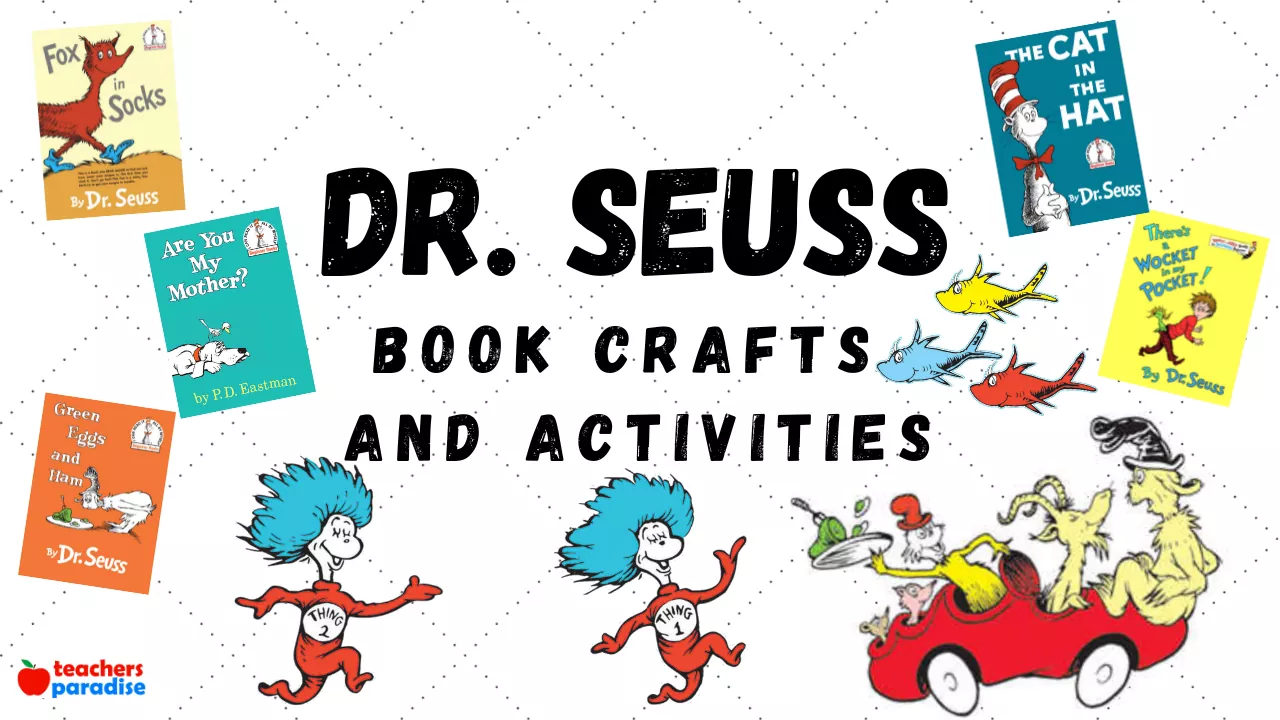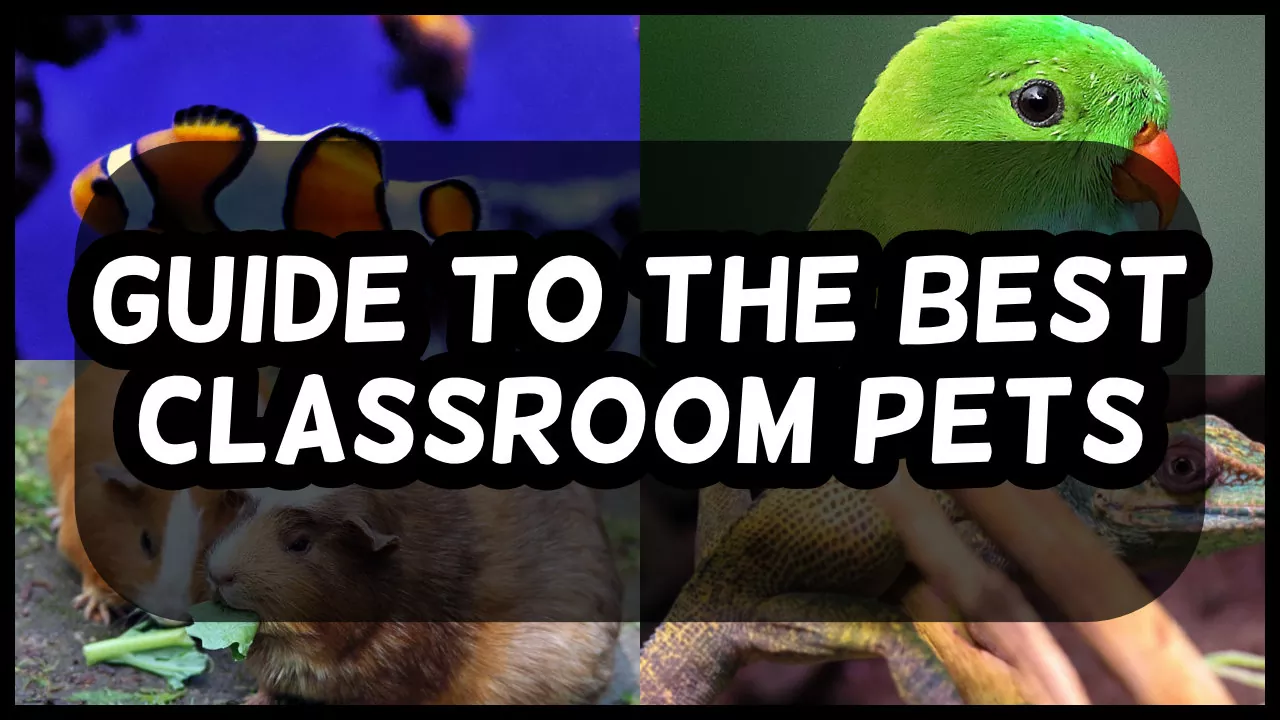Your Muscular/Skeletal System
To the Teacher
The skeletal and muscular systems are such wonders of design and physics that students can easily become impressed by the fact that we are able to stand up and walk. The Fact Page that accompanies this unit is designed to look at these systems from a viewpoint other than identification of bones and muscles (B O R I N G ! ).
The muscular system works quite well considering that the only movement a muscle can really do is to pull one bone toward another bone. Working with joints that allow only certain ranges of motion, we are capable of an awesome repertoire of movement. From a leap of joy to the playing of a Mozart etude we move bones by contracting one muscle while relaxing another. Today we know much about muscle development and becoming stronger, more flexible, and having more endurance. Students will be aware of the value of exercise and training for optimal muscle use.
WORKSHEET & Sample PDF Activity
Sample PDF Activity
The involuntary muscle movements that are continually active in our bodies is always a bit of a surprise. From focusing your eyes on this page to the journey your breakfast cereal has begun to the constant beating of your heart — aren’t we impressed with muscles!
The animal kingdom had to develop some scheme to enable them to become more than shapeless, immobile blobs unable to rise above the surface of the ground. Earth’s gravity made it imperative that a material be developed that would be stronger than the gravitational pull and thus allow animals to assume definite shapes and heights above ground level. Insects developed exoskeletons; we developed endoskeletons.
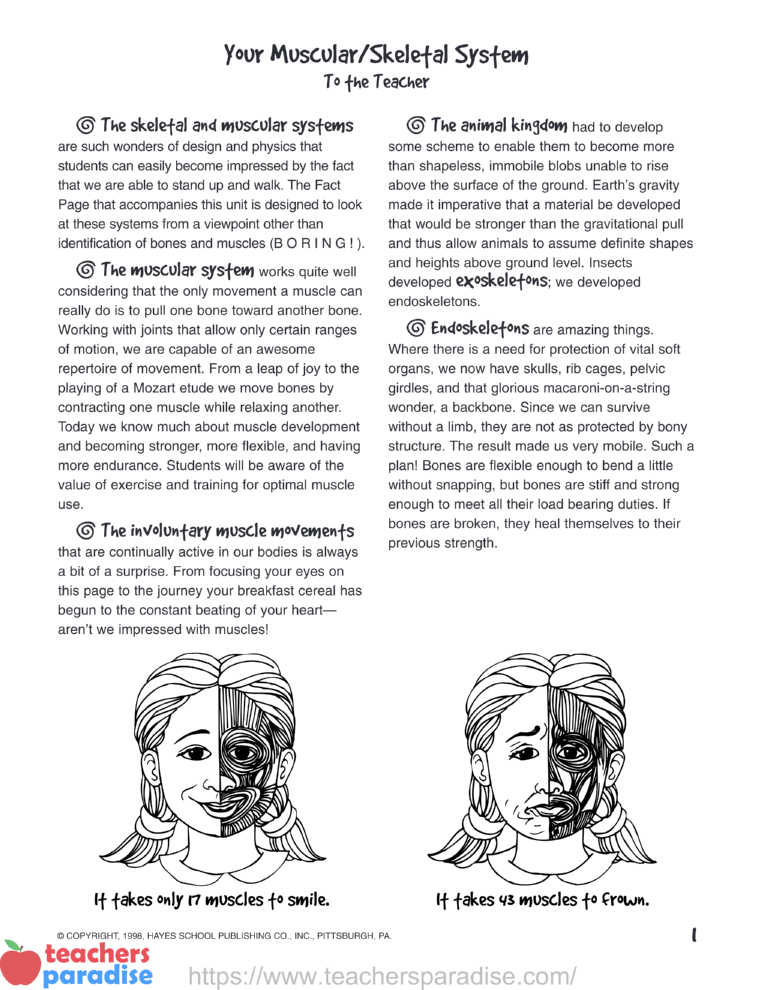
Endoskeletons are amazing things. Where there is a need for protection of vital soft organs, we now have skulls, rib cages, pelvic girdles, and that glorious macaroni-on-a-string wonder, a backbone. Since we can survive without a limb, they are not as protected by bony structure. The result made us very mobile. Such a plan! Bones are flexible enough to bend a little without snapping, but bones are stiff and strong enough to meet all their load bearing duties. If bones are broken, they heal themselves to their previous strength.
It takes only 17 muscles to smile.
It takes 43 muscles to frown.
Your Muscular/Skeletal System
Bones: Are made of collagen, calcium, and phosphorous. A living bone is pale gray, full of blood vessels, slightly flexible, and can hurt!
Skull:
Protects: brain, eyes, ears
Thorax (rib cage):
Protects: heart, lungs, digestive system
Pelvic Girdle (pelvis):
Protects: digestive system, bladder, kidneys, reproductive organs
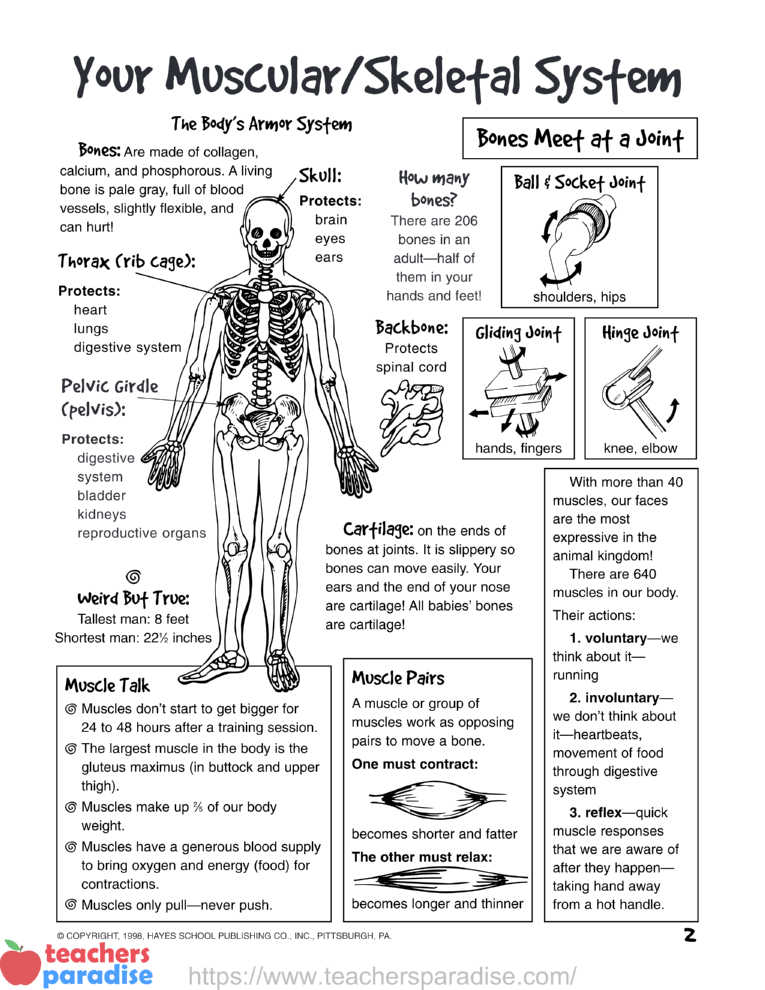
Backbone:
Protects: spinal cord
Cartilage: on the ends of bones at joints. It is slippery so bones can move easily. Your ears and the end of your nose are cartilage! All babies’ bones are cartilage!
Muscle Talk
Muscles don’t start to get bigger for 24 to 48 hours after a training session.
The largest muscle in the body is the gluteus maximus (in buttock and upper thigh).
Muscles make up 2/5 of our body weight.
Muscles have a generous blood supply to bring oxygen and energy (food) for contractions.
Muscles only pull—never push.
Muscle Pairs
A muscle or group of muscles work as opposing pairs to move a bone.
One must contract: becomes shorter and fatter
The other must relax: becomes longer and thinner
TABLE OF CONTENTS
Unit 1: Your Muscular Skeletal System
To the Teacher – 1
Information Page – 2
Worksheet – 3
Think It Through – 4
Activity – 5
Review What You Learned – 6
Unit 2: Your Digestive System
To the Teacher – 7
Information Page – 8
Worksheet – 9
Think It Through – 10
Activity – 11
Review What You Learned – 12
Unit 3: Your Respiratory System
To the Teacher – 13
Information Page – 14
Worksheet – 15
Think It Through – 16
Activity – 17
Review What You Learned – 18
Unit 4: Your Circulatory System
To the Teacher – 19
Information Page – 20
Worksheet – 21
Think It Through – 22
Activity – 23
Review What You Learned – 24
Unit 5: Your Nervous System
To the Teacher – 25
Information Page – 26
Worksheet – 27
Think It Through – 28
Activity – 29
Review What You Learned – 30
Unit 6: Your Skin
To the Teacher – 31
Information Page – 32
Worksheet – 33
Think It Through – 34
Activity – 35
Review What You Learned – 36
Unit 7: Your Eyes and Ears
To the Teacher – 37
Information Page – 38
Worksheet – 39
Think It Through – 40
Activity – 41
Review What You Learned – 42
Unit 8: Your Nose and Mouth
To the Teacher – 43
Information Page – 44
Worksheet – 45
Think It Through – 46
Activity – 47
Review What You Learned – 48

